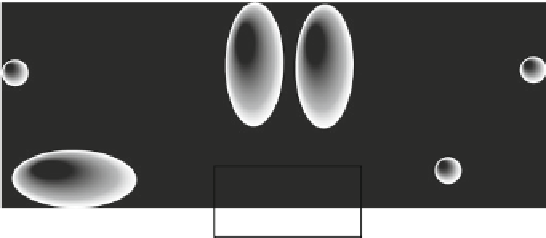Biomedical Engineering Reference
In-Depth Information
H
2
N
H
2
N
NH
NH
O
O
O
O
O
O
O
O
m
m
n
x = 1, y = 6.7
x = 5, y = 5.3
x = 9, y = 3.4
OH
O
2
N
O
CH
2
CH
2
NH
NO
2
O
2
N
HO
CONHCH
2
CH
2
N
O
2
N
OH
O
CH
2
CH
2
NH
NO
2
7
O
2
N
Fig. 2
Cationic polyrotaxanes with different oligoethylenimines based on b-CD and PEO-PPO-
PEO triblock copolymer
comparable with those of PEI25. In addition, Liu et al. reported the condensation
of calf thymus DNA by CDPRs with anthryl-modified-b-CDs threading onto poly-
propylene glycol (PPG) (Liu et al.
2007a
). However, no cytotoxicity and transfec-
tion results have been reported for these CDPRs.
3.4
Poly[2-(Dimethylamino)Ethyl Methacrylate]
Poly(2-(dimethylamino)ethyl methacrylate) (PDMAEMA), as illustrated in Fig.
3
is
a water-soluble inherent cationic polymer, which is frequently synthesized by radi-
cal polymerization of 2-(dimethylamino)ethyl methacrylate. Initial study by
Hennink et al. suggested that PDMAEMA displayed higher transfection efficiency
than PLL in COS-7 and OVCAR-3 cells, and its transfer activity was dependent on
both molecular weight and polymer/DNA weight ratio (van de Wetering et al.
1997
).
Despite its relatively high
in vitro
transfection capability, the
in vivo
gene delivery


































































Search WWH ::

Custom Search